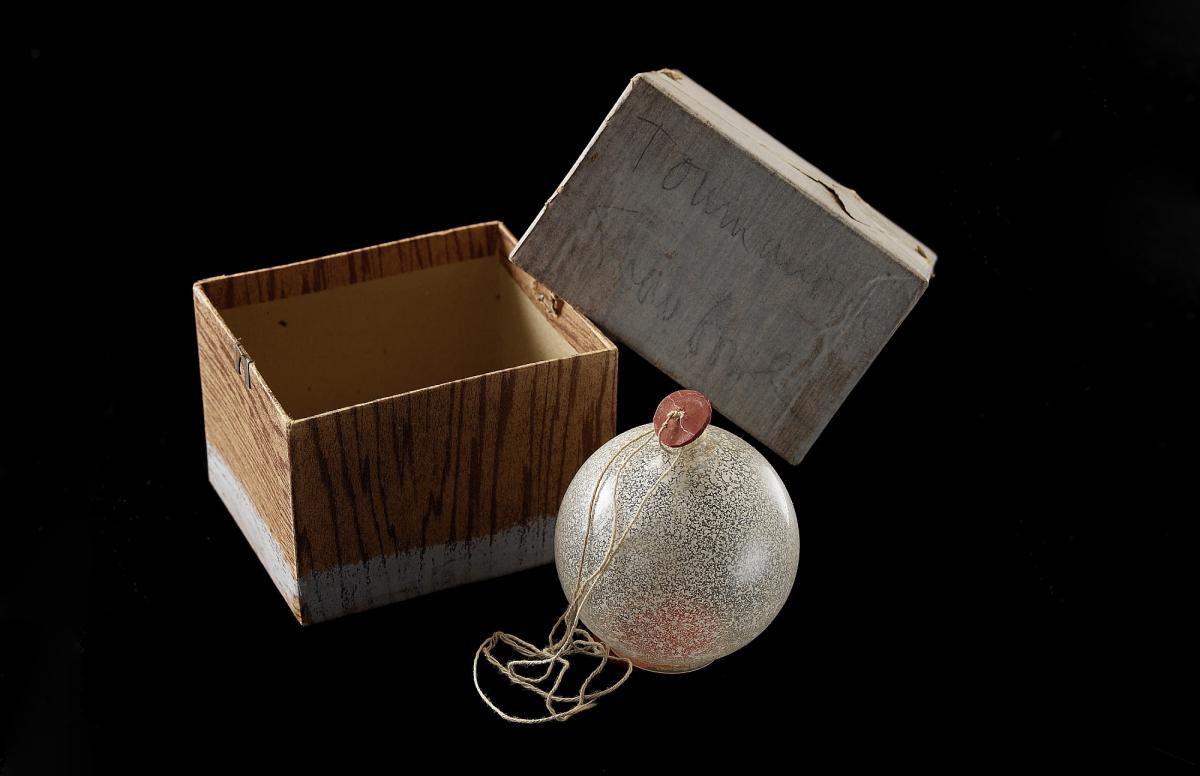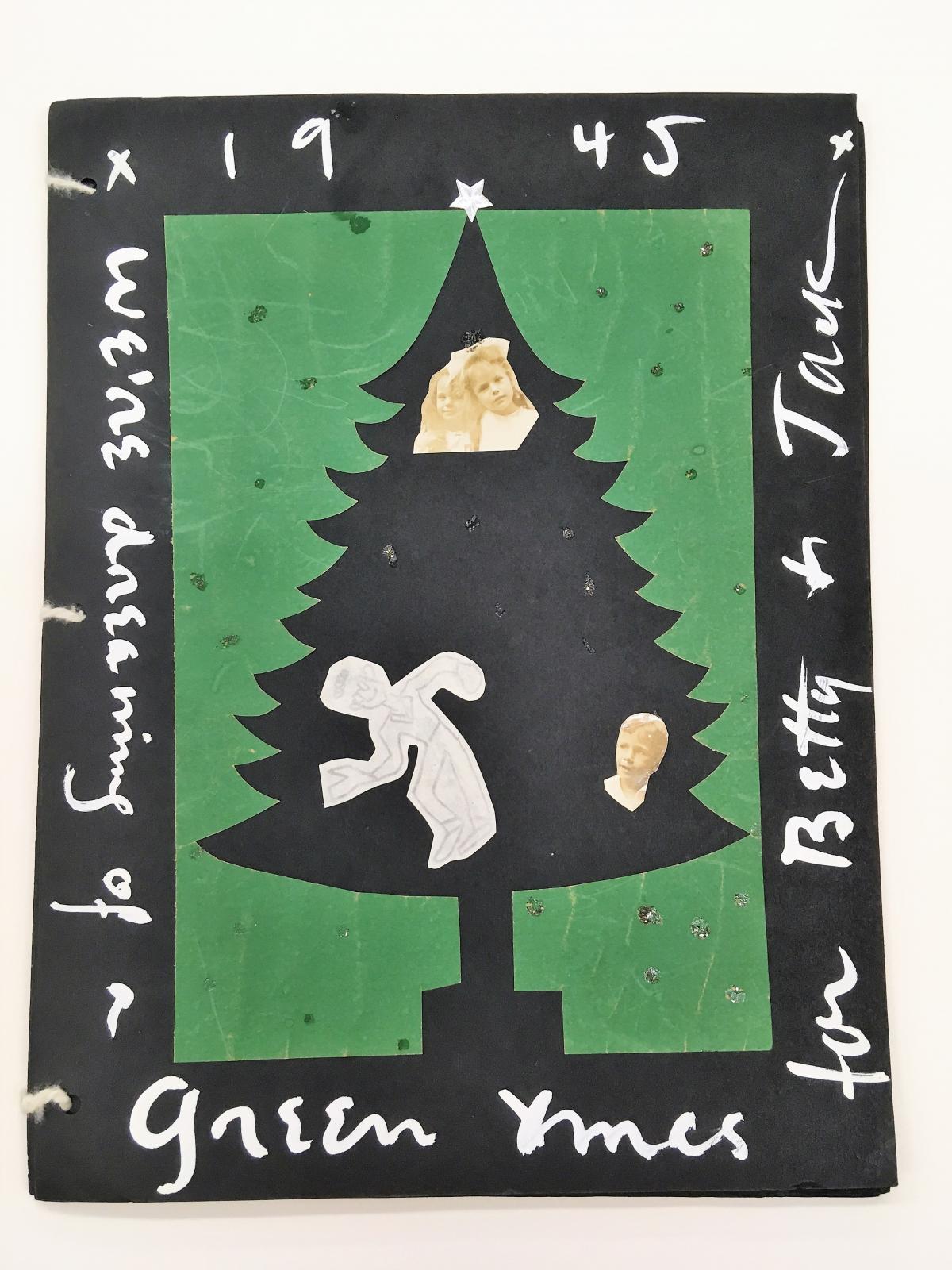Joseph Cornell, best known for his shadow boxes and collages, was born on Christmas Eve 1903 in Nyack, New York. As an adult, Cornell looked back fondly on his holidays as a child, remembering them as magical times complete with festively decorating his Victorian home alongside his mother and siblings and a big roast beef dinner.
With such fond memories of Christmases past, Cornell often scheduled his exhibitions in December. His early “objects” were experiments in transformation—turning regular things like paper pillboxes and wooden chests filled with glass jars- into “minutiae, glass bells, shadow boxes, coups d’oeil, and jouets surrealists.” His first one-man show at Julien Levy Gallery, The Objects of Joseph Cornell (November 26–December 30, 1932) debuted these works to little fanfare. Although Cornell himself thoroughly enjoyed gifting his works to friends, family, and idols, the dismissive reviews in The New York Times and The New York Herald Tribune trivialized the artworks, describing them as “glittering ornaments” and “amusingly clever bibelots for the Christmas season.” Cornell had painstakingly labored over these standalone artworks and, although small in scale and charming in nature, meant an enormous amount to the artist and are an important part of understanding Cornell’s artistic practice as a whole.
Cornell’s Untitled (Boule de Neige Pour Tamara Toumanova) is an example of the type of objects he would have exhibited at the Julien Levy Gallery in the 1930s. The delicate snowball is dedicated to Tamara Toumanova, the prima ballerina whom Cornell would go on to befriend and send numerous gifts to throughout his lifetime. Inside the snow-speckled orb, the thin silhouette of a paper ballerina is just barely visible, gracefully dancing amidst a winter storm. Although this object is in the collection of the Smithsonian American Art Museum, it is possible that he had sent Toumanova a variant as a gift.
Through gift giving, Cornell hoped to form a spiritual connection with the recipient. Once the recipient was in possession of the object, they were invited into Cornell’s intimate world, encouraged to explore his associations, and to contemplate their meaning. Gifts from the artist did not always take the form of three-dimensional objects. Oftentimes, Cornell would add collaged elements to letters sent to family and friends. Here, a Christmas greeting sent to his sister, Betty, and her husband, Jack, is the cover of a small album full of childhood photos of the four Cornell children, a sentimental gift that would connect brother and sister.
This story was originally published on December 24, 2018. Read more about Joseph Cornell, including his work as a collector and mentor and the important objects in the Cornell Study Center on SAAM Stories.




















